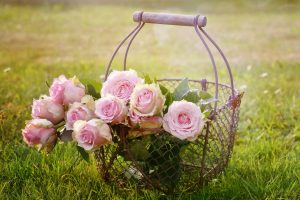There are a number of ways one can start a garden. You can go to a nursery or home improvement store, buy the plants and then transplant them into your garden. You can start with seeds and nurture them. You could take cuttings from existing plants and put them in your garden or nurture them so they are better established and then transplant them into your garden.
Advantages of Creating Plants From Cuttings
Some of the advantages of using cuttings to propagate plant growth include:
· Quality of the Plant. Creating a plant from the cuttings of another plant guarantees a quality offspring if you start off with a quality mother plant. The new plant will have the same characteristics as the mother plant. For example, if the mother plant is naturally resistant to certain pests or diseases or remains in flower longer, using cuttings assures that the new plant will retain the same characteristics.
· Quick maturity. Using seeds will take time. First, it will take some time to germination and it could take as long as another six weeks to a year before the plant is fully mature and starts to showcase blossoms or fruits. Cuttings commonly mature within a few weeks to several months. That’s because the roots are forming from an already mature plant leaf or stem.
Disadvantages of Creating Plants From Cuttings
Disadvantages of starting with cuttings include:
· The natural diversity is lost. Seeds combine the traits of both parent plants and this can influence the color of the plant, the size and flavor of its fruit and disease and pest resistance. This is beneficial when the parent plants do not have problems including being susceptible to certain diseases. Cuttings don’t result in plants that have mutated. For the most part, this is a good thing. However, it does prevent changes that could be beneficial to the plant.
· Natural limitations. If you want to create many new plants quickly, then relying on cuttings from one mother plant is not the way to go. There are only so many cuttings one plant can provide. One plant could supply hundreds of seeds, but only six or so sustainable cuttings.
The process of creating plants from the cuttings of a mother plant begins with gathering everything you will need for the project. This includes:
· A Mother Plant
· Soiless Potting Mix
· Rooting Hormone
· Water
· Containers for holding water and rooting hormone
· Razor Blade or Scissor
· Alcohol
· Pencil or Stick
· Plastic Bag
Inspect your garden or house plants to identify a healthy plant from which you can take the cuttings. Plants that feature non-woody stems are said to be ideal as a source of cuttings. Be certain that you select a plant that is large enough to supply the cuttings without suffering damage or death.
Once you have the mother plant selected, you need to prepare containers to host the cuttings. Fill a clean plant pot or container with soiless potting mix. The mix will hold the stem cutting as it roots. Expert gardeners suggest the use of soiless mix because it drains better than garden soil and attains a moist, not wet condition.
When the container is ready, sterilize a scissor or a razor blade with alcohol and make a clean cut on the stem just below a node. The cut can be short as long as it includes a couple of leaves. Longer cuttings can quickly dry out.
Use a stick or pencil to poke holes in the potting mix. This will assure that the rooting hormone gets on the cutting and is not left in the soil. The rooting hormone will assist the cutting to root.
Fill one container with water and another with a little rooting hormone. Dip the node end of the cutting into the water and then into the rooting hormone.
Carefully put the cutting into the hole in the potting mix and firm the soil around it. You can put several cuttings in one container, but space them so the leaves from one don’t touch the other.
Place the container with the cutting into a plastic bag. The bag will serve as a greenhouse and keep the humidity high and contain the heat. You want some airflow to get to the cutting; so don’t completely seal the bag.
Place the bag and container in a warm location of your house.
Check regularly for too much condensation on the top of the bag. If there is too much, then water will be dripping onto the seedlings. If this occurs, then the potting mix may be too wet. Replace the bag and permit the mix to dry out a little bit.
It is possible that the cuttings could rot before they root. So it is imperative that you check them regularly. Remove cuttings that you suspect are rotting as soon as you spot it.
Make certain that the cuttings remain moist, not wet. Check the progress of the root growth after a few weeks by tugging gently on the cuttings to test resistance. Once the cuttings have developed roots, remove the bag and plant the cuttings into pots of their own.








